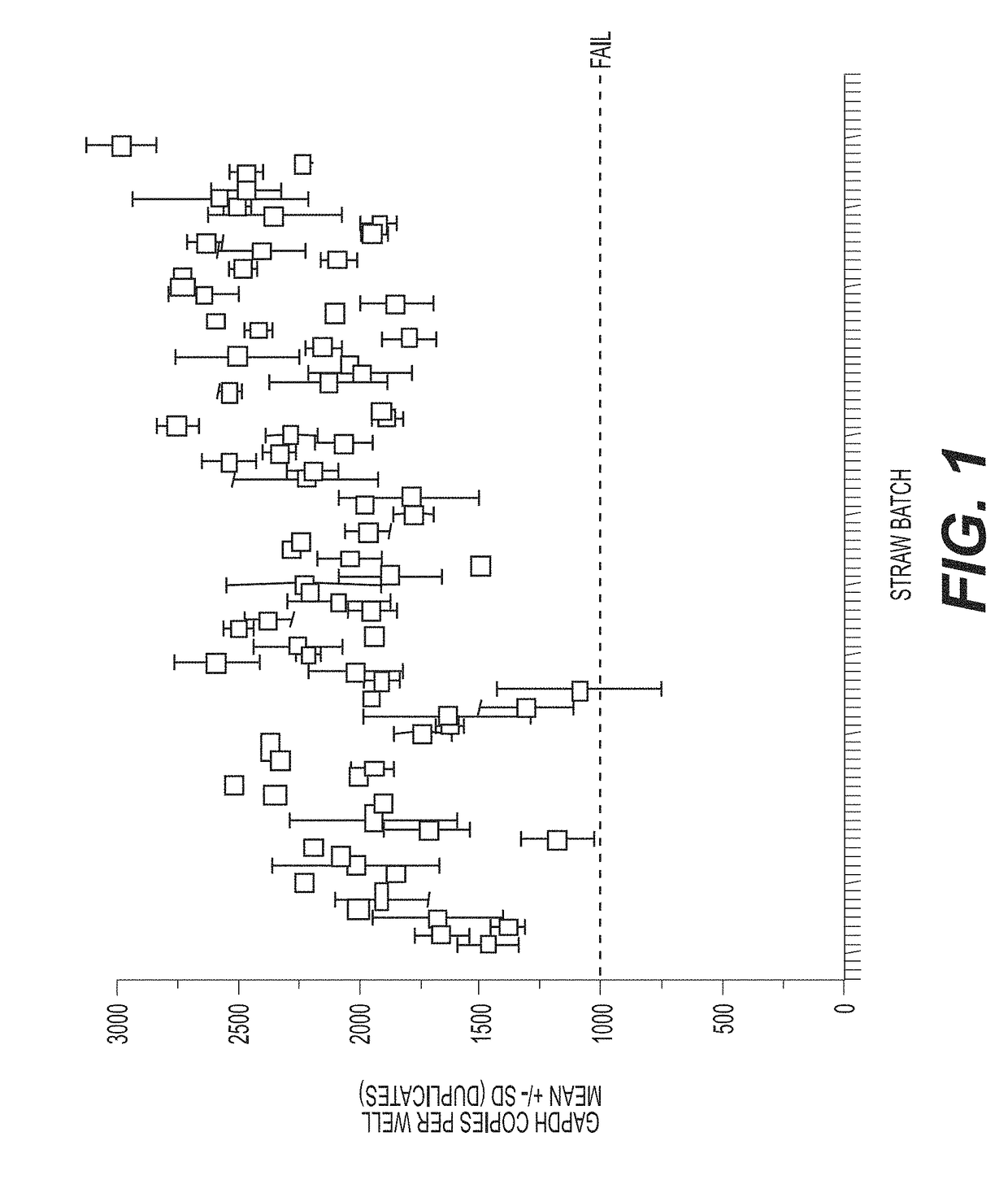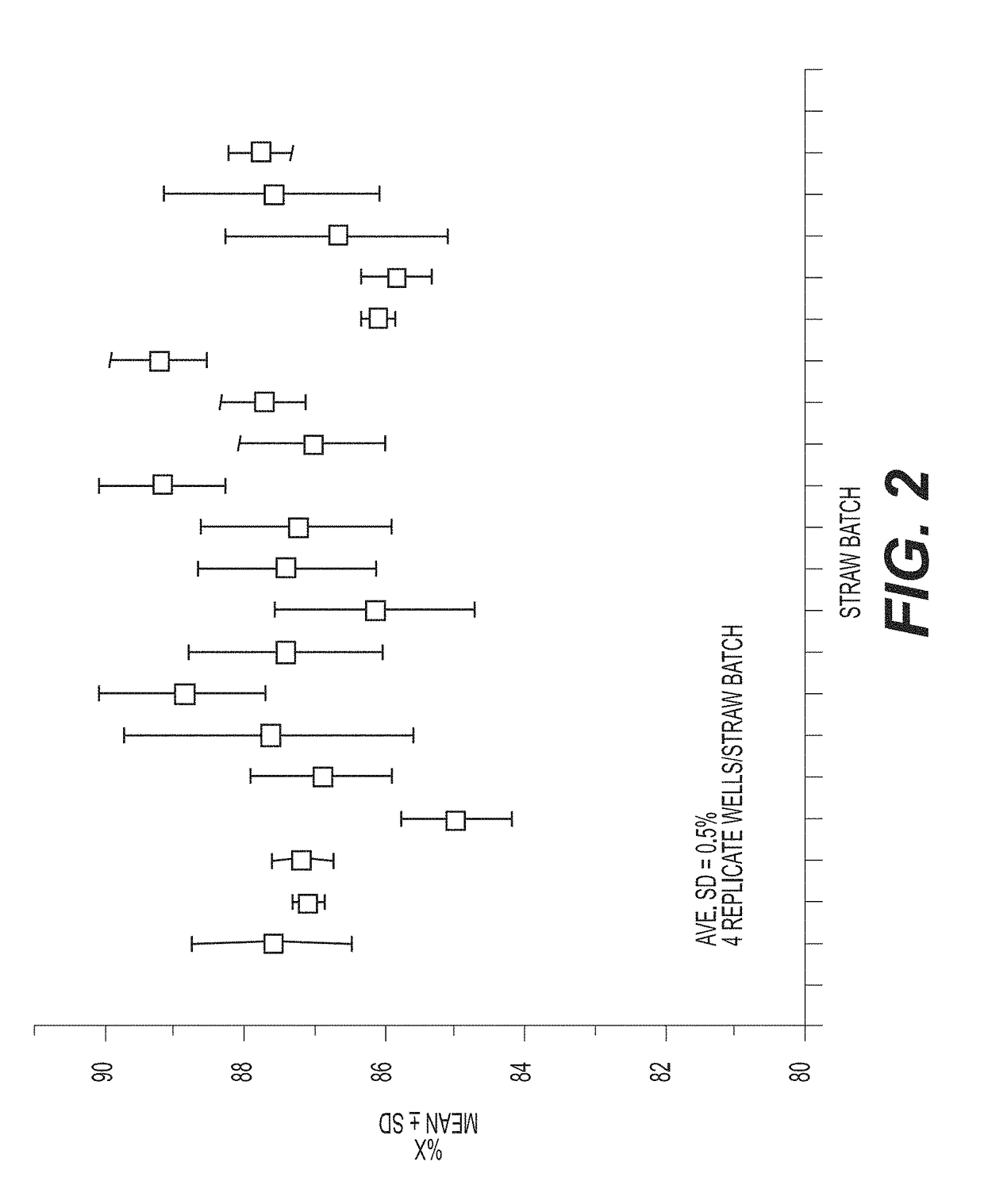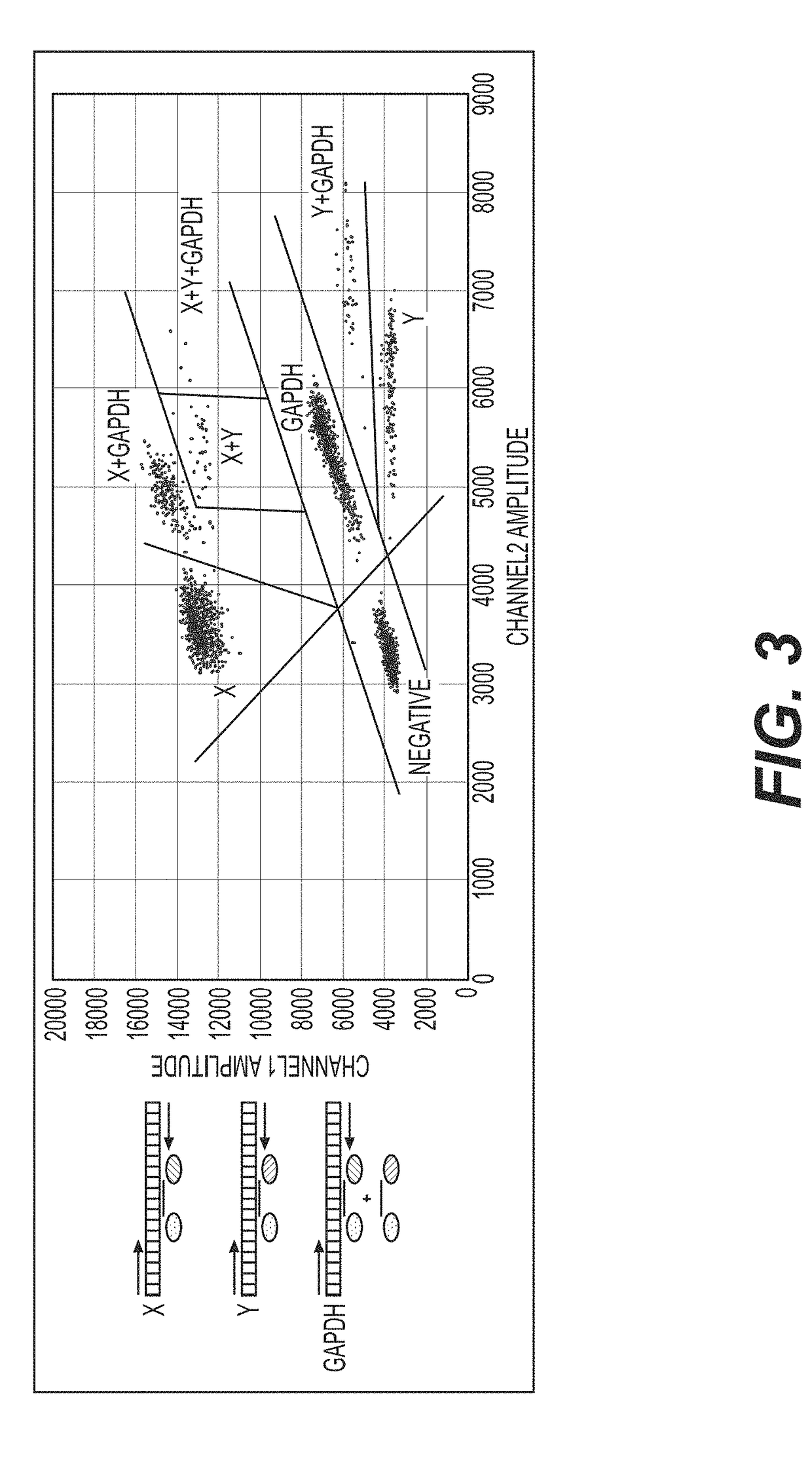Methods and systems for assessing and/or quantifying sperm cell subpopulations bearing a specific genetic signature
a technology of sperm cell subpopulations and methods, applied in the field of methods and systems for assessing and/or quantifying sperm cell subpopulations bearing a specific genetic signature, can solve the problems of spermatozoa populations having unrecognized underrepresentation of the population of interest, conventional technologies are significantly limited in their ability to reliably, and historically limited quantification of the relative population of sperm cells bearing the x or y chromosome in s
- Summary
- Abstract
- Description
- Claims
- Application Information
AI Technical Summary
Benefits of technology
Problems solved by technology
Method used
Image
Examples
example 1
the Quality of Sex-Skewing of Sperm Cells
[0188]Typical existing quality control for sex skewed sperm samples relies on FISH. However, the necessary scale-up for production quality control using FISH to determine the percentage of X-bearing cells is prohibitive, due to requisite labor hours. In addition, current FISH analysis does not quantify the desired product, but assumes X-chromosome cell counts based on the absence of signal from a Y-chromosome probe (a negative result assay). Further, the resources necessary to perform FISH quality control on one straw batch result in high cost, requiring 4 straws and more than 10 hours per day to complete 24 samples. Finally, even if an algorithm can be implemented to quantify signal for the otherwise manual assessment, data are sensitive to equipment, including bulbs which must be routinely replaced. Additionally, typical existing quality control for sex skewed sperm cell samples have limited accuracy and precision, by virtue of implementing...
example 2
the Quality of EMA-ddPCR Protocol
[0206]An alternative protocol to the gender selected semen (GSS) sex skewing protocol includes using ethidium monoazide (EMA) to remove DNA from dead cells instead of glass wool as described above. EMA is DNA-intercalating dye that penetrates only into cells with damaged membranes or binds to free DNA to inhibit subsequent amplification, and allowing only amplification of DNA from live cells. Additionally, when cells are stained with EMA and exposed to light prior to permeabilization, the EMA is covalently linked to the DNA in the dead cells and cannot subsequently leak out.
[0207]Briefly, X-skewed sperm cells are prepared by ablating Y-chromosome-bearing sperm cells, and the skewed samples are frozen. Two straws per batch (Straw Batch) are thawed and the cells are treated with EMA for 30 mins using a PMA-Lite™ photolysis device. The cells are pelleted using BoviPure® density gradient and re-suspended in warmed media. The collected intact cells are ei...
example 3
tion of Sex Skew in Bovine Semen Samples and Assay Validation
[0209]Primer sets are tested for both the X and Y chromosomes. Three X-chromosome pairs are tested:
TABLE 3Bos Taurus X Chromosome PrimersLabelTarget GenePrimer Sequences (SEQ ID NO) (5′-3′)X1BosAGAGAAGACCCATGATGCAAAGTCC (SEQ ID NO: 237)taurusCCTTTCATAGCATCCATGCCTCC (SEQ ID NO: 844)KLHL4X2BosGCACACTCACTAGGAGAAACAAACC (SEQ ID NO: 222)taurusTGGAACTGCTCCTCAAATCTGC(SEQ ID NO: 845)KLHL4X3BosTTACCTGAGAGAAGACCCATGATGC (SEQ ID NO: 846)taurusCTCCTACAGCATAAAGTGCTCCC (SEQ ID NO: 847)X-1437318GACTCAAGTCATTGAAGTCTGCTCC (SEQ ID NO: 848)GAGCTTTGTACAGCCTTGGGC (SEQ ID NO: 849)
TABLE 4Box Taurus Y Chromosome PrimersTargetAmpliconLabelGenePrimer SequencesProbe SequenceLengthY1Y Ch. 786AAGCCTGGGCCACAATAAGGTCGGCGGACTTTCCCTGTAACAAA137 bp(SEQ ID NO: 850)(SEQ ID NO: 851)AAGAGCGCCTTTGTTAGCG (SEQID NO: 852)Y2Y Ch. 1427ATTAAGCCGGTCACAGTCCGTCGGCGGACTTTCCCTGTAACAAA207 bp(SEQ ID NO: 853)(SEQ ID NO: 855)AAAGAGCGCCTTTGTTAGCG(SEQ ID NO: 854)Y3Y Ch. 1695GAGC...
PUM
| Property | Measurement | Unit |
|---|---|---|
| Tm | aaaaa | aaaaa |
| temperatures | aaaaa | aaaaa |
| temperatures | aaaaa | aaaaa |
Abstract
Description
Claims
Application Information
 Login to View More
Login to View More - R&D
- Intellectual Property
- Life Sciences
- Materials
- Tech Scout
- Unparalleled Data Quality
- Higher Quality Content
- 60% Fewer Hallucinations
Browse by: Latest US Patents, China's latest patents, Technical Efficacy Thesaurus, Application Domain, Technology Topic, Popular Technical Reports.
© 2025 PatSnap. All rights reserved.Legal|Privacy policy|Modern Slavery Act Transparency Statement|Sitemap|About US| Contact US: help@patsnap.com



